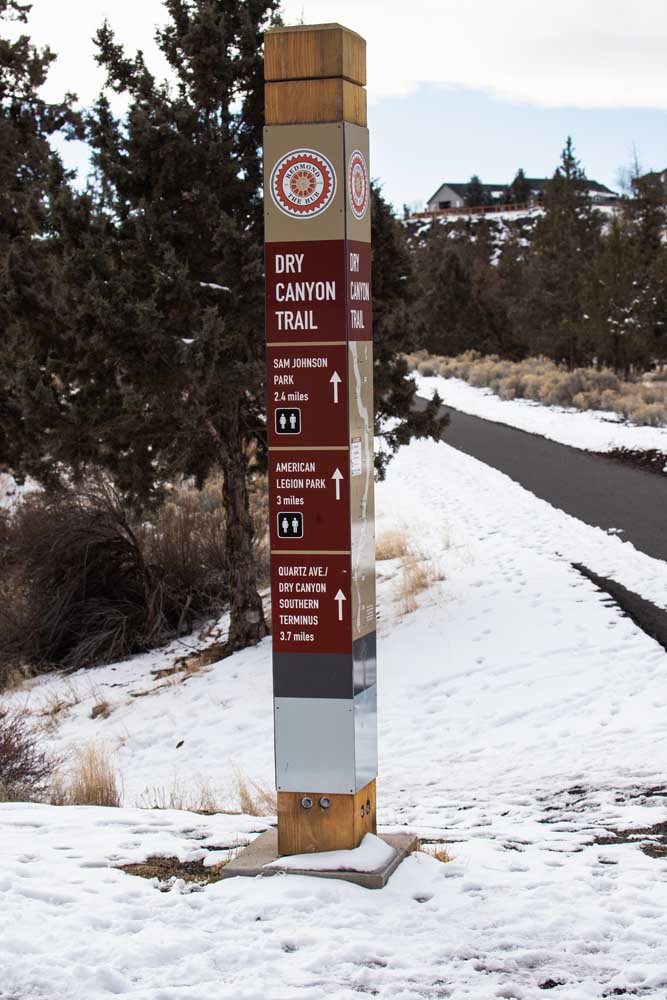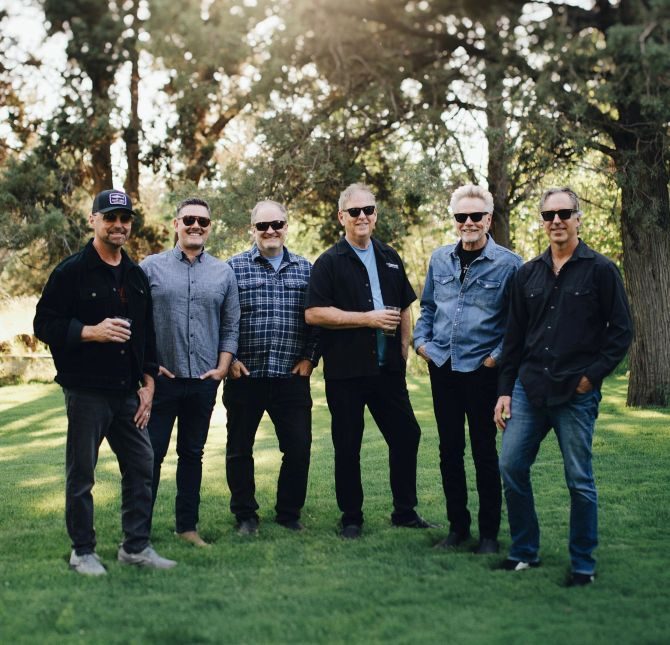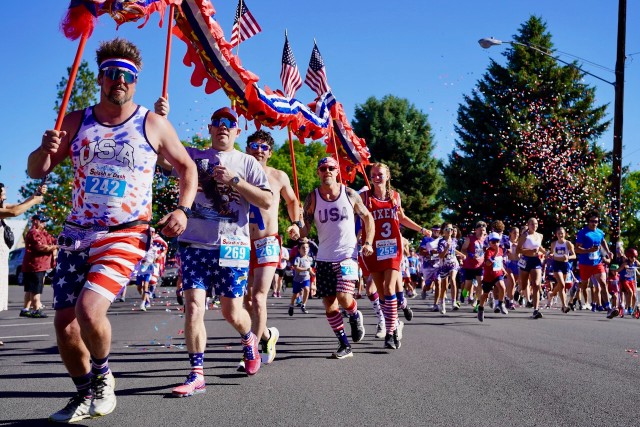Don’t go chasing muddy trails: Keep it dry at Dry Canyon
Published 6:30 am Thursday, February 20, 2025

- The trail marker on the Dry Canyon trail at the northern terminus. The trail has several of these markers along the way guiding walkers to different access points throughout.
As we faced the morning sun, the air bit at my face, finding all the holes in my knit hat and freezing my still-damp hair from that morning’s shower.
I kept reminding the both of us that the way back would be better with the wind at our backs like the old Irish blessing hopes for.
On that frigid morning, my sister, Heather, visiting from out of town, joined me for a morning stroll down an easy path, wanting to avoid the mud while getting the crisp, sometimes icy, High Desert air she had been missing.
And we found just the ticket in Redmond.
With the freeze/thaw cycle and the wet weather of late winter, it isn’t unusual to find a soggy mess on your favorite trail. But save your shoes (and the trail itself) and hit something that is a sure-fire guarantee not to be muddy and head over to Redmond’s Dry Canyon, a long, fully paved trail that can give you at most over 7 miles of easy walking that lives up to its name even during the wetter months.
A canyon runs through it
Running through the heart of Redmond, the Dry Canyon trail has many entrance points from various neighborhoods and parks above along the canyon’s rim. Most, have a killer set of stairs leading down to the base of the canyon but there are a couple of nearly level access points for those not willing to take on several flights of concrete steps.
One of these is at the trail’s northern-most point, where it runs from the water treatment facility to Quartz Park, though my sister and I turned around at the dog park at Antler Avenue, giving us over 4 miles of trail time. But no matter how long you make your outing, it’s a great way to get some fresh air and activity for all ages and most abilities, thanks to its mostly level elevation coupled with the smooth, wide surface.
Despite the trail being surrounded by the growing city and many homes lining the rim, it’s easy to forget all that.
As you take in the stands of western juniper surrounded by sagebrush, bitterbrush, fescues and other bunch grasses dormant during the colder months, songbirds like robins, jays, and sparrows happily flit and tweet about flying from tree to tree or rocky crags to rocky crag. You may even spot some furry wildlife (besides the many dogs out for a walk) including marmots, rabbits, porcupines or a coyote.
Those up for more gains and taking things higher (and are experienced climbers) can make a turn at the climbing area underneath the Maple Avenue Bridge, though that could be a little cold this time of year.
Along the way, there are many spurs offering a natural path for those hiking and biking on days when the trails are dried out or frozen over when you want a bit more nature. But for now, the paved path makes for a better winter outing for not only us Sunday-strollers but for the trail itself.
Let it dry
Whether through ignorance or happenstance, we’ve all hiked a muddy trail at some point. But we really shouldn’t.
Besides the general slippy-slidey nature of walking on mud, it can be bad for the trails and the surrounding area.
A saying goes, “If you leave tracks, turn back.” So, if you find yourself on a trail that is bogged down in the mud, go back the way you came or risk damaging the trail or the natural space around it.
Walking or biking through mud creates ruts, which in turn leads to expensive repairs on already overstretched agencies in charge of maintaining these areas. While several volunteer organizations aid with trail work throughout the year, they also may not have the numbers or full resources needed to help. It’s more vital than ever to make sure our trail systems stay as pristine as possible and that starts with every trail user.
If you have to walk on a muddy trail (sometimes it’s unavoidable), it’s better to walk straight through it and not to walk around it.
When you try and avoid the mud and walk off trail, it damages the often-delicate flora below, widening the trail and creating more harm than most hikers and bikers would want as it goes against the whole “leave no trace” thing.
But the best way to help is to avoid trails that are muddy, to begin with, that way we can help keep our trails in good condition while respecting the nature around them for years to come.
Rich history
The canyon formed as part of the Deschutes formation around 780,000 years ago, according to signage along the trail.
In more recent years, the canyon was once the site of the city’s official dump until the 1950s, a spot you can literally still see the rusty remains of near the Maple Avenue Bridge.
Today, the city and its visitors can enjoy its wide open, natural spaces with ease.
Dry Canyon is not the only paved or gravel trail in the area, but it is one of the more accessible, easiest and quickest ways to get outside without tromping through the mud of late winter and early spring. And you get a bit of history and a bit of fauna without ever leaving the city.








